collected online articles, documents, comments, about and by filmmaker Nathaniel Dorsky
Don't wanna be here? Send us removal request.
Text
Audio introduction for the Arboretum Cycle playing twice in Maine

We're providing a link to an audio file
The file is stored in Box. Listen to the audio here.
Transcription of Nathaniel Dorsky’s audio introduction for the Arboretum Cycle playing twice in Maine.
Recorded on April 18th, 2025, for screenings at The Strand Theatre in Rockland, Maine (April 27th) and SPACE Gallery in Portland, Maine (May 4th)
Hello everyone! It’s a pleasure to be in front of you, and I hope I can be helpful.
I should explain this, especially for the people from Maine. Northern California has its own sense of seasons, which is quite different than the East Coast, where I grew up. The East Coast seasons are deep in my veins, so to speak, and the California seasons are sort of subtle suggestions of seasons.
But we in California have a rainy season, which is different from the East. It rains, oh, from around Thanksgiving to around Easter. For people in Maine, they might walk out and say, “Those aren’t seasons!” But just go along with it. I had to. It took 15 to 20 years to get used to California!
In Northern California, if there’s no rain – or hardly any rain – during that three-month period, it’s big trouble. So at the time of making this film, we had maybe three years of drought. And then it began to rain after three years. It became a glorious rain, just pouring – not enough to be destructive, but constructive. And somehow, it ignited the garden.
This is a garden in Golden Gate park, which is actually designed by the same people who did Central Park – Olmsted, you know. But within the park, there’s a fenced-off garden, and it ignited. You could just feel it. When you walk in the garden, these plants which had been starving and thirsty, were suddenly drinking it all in and putting out energy. That was unusual.
So I thought I would go out and shoot a film called maybe Early Spring. It ended up being called Elohim.
When I finished that film, I sent it off to the lab. Before it even came back from the lab, I took a walk in the garden again. And now it wasn’t early spring. Now it was mid-spring. That’s more of a full spring.
One film turned into seven films. Each one made as a reaction to the previous one – or maybe not a reaction, but an extension of the previous one – until I returned all the way around again to what we call winter.
The summer, for instance, it wouldn’t rain for months. Everything gets sort of dry and dead. And the wintertime here, unlike the East, everything that was brown during the summer now becomes green during the winter. So the winter is actually a green time.
Anyway, I tried to capture all this. Another thing is, when I was working on it, a friend said to me, “Are you sure? Why does it start at early spring? Maybe it should start in the winter, or maybe it should start someplace else.” So I rearranged the order of the reels, and I played it to myself – and no. I thought you could start anywhere in the circle and be fine, but actually the filmmaking, and the syntaxes and so forth used, were developed over the same yearly period. So things that I was shooting maybe the twelve month of the film, the quality of the shooting was based on those twelve months already of shooting. So there’s a double thing going on: the rotation of the annual cycle, and the development of the silent speech of a visual cinema.
The thing is, in making a silent film, it allows you to articulate with images. It allows for a visual articulation. If you have visual articulation plus sound, the mind goes to sound. I think somehow sound is more basic than seeing. You would think, I would think, sight is primary, but I think sound is primary. And I know that in the Tibetan tradition – the Tibetan Book of the Dead – they mention sound as the last thing to die when you die. So when someone is lying in their bed with their eyes shut, you can still talk to them. They might not be able to see. And there’s this tremendous opportunity with expressing yourself with vision only. The cuts, from one thing to the other, become more comparable to something in music – like a key change, you know? You know a good composer has wonderful key changes. And so going from one shot to the other has the potential for what a key change does, which is to give birth to something fresh and new in the present moment.
When there’s sound, you can take it as a social event. “Oh we are attending an avant-garde film show,” something like that. But when it’s silent, it becomes something more intimate. I don’t know if it’s post-verbal or pre-verbal, but it’s something more intimate. I got to appreciate the silent cinema very, very much.
I think, like grapefruit or olives, it’s kind of an acquired taste. The first moment it might seem like there‘s less than you want, but if you relax and enjoy it, it’ll give you more than you want.
I want to figure out, how can I keep this film being about the place – the garden – but not being limited because it’s about the garden? A silent film about a garden could seem trying, so how could I make the film itself have the same sense of energy and bloom that the plants have?
And frankly, it’s a film I haven’t seen in its entirety since I finished it, which must be a few years now. And I’m looking forward to seeing it. I wish I was in the room with you, because I would love to see it myself.
It was a big thing – and yet a simple and easy thing. It was big and simple.
I hope you can enjoy the film, a lot of it will depend on your neighbor, next to you. If their stomach starts to gurgle, things like that, it would be very disruptive, so I suggest everyone burp before the film begins! (laughs)
4 notes
·
View notes
Text
Two screenings, a week apart, of the entire Arboretum Cycle in Maine
We are very happy to announce the Maine premiere of Nathaniel Dorsky’s luminous, silent "The Arboretum Cycle" at Strand Theatre, Sunday April 27th. The Arboretum Cycle will also screen at Space Gallery on Sunday, May 4th.
Strand Theatre, Sunday, April 27, 2025 5:30 PM Space Gallery, Sunday, May 4, 2025, 5:30 PM
The Arboretum Cycle | 2017 | 16mm | color | silent | 137' 00
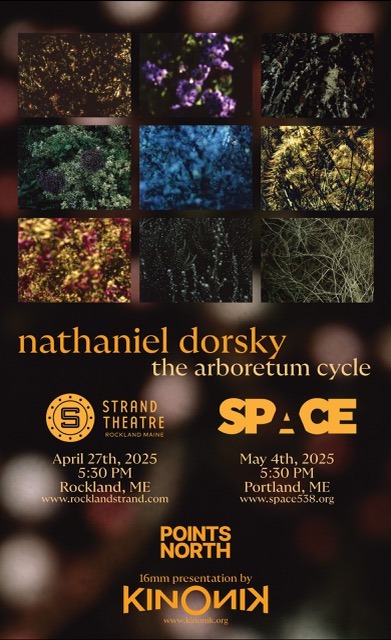
Poster announcing the two shows in Maine
Nathaniel Dorsky wrote on his blog about the Arboretum Cycle:
For the past several years California experienced an extreme drought. But this past winter good fortune brought a bountiful amount of storms and liquid refreshment. The spring that followed took on magical and celebratory qualities of energy, joy, fullness, and rebirth.
In walking distance from my apartment is San Francisco’s Arboretum located in Golden Gate Park. I decided that I would make a film now on a single subject and that subject would be the light – not the objects, but the sacredness of the light itself in this splendid garden. What I did not know is that the great beauty of this magnificent spring would bring forth not one, but seven films, each one immediately following the previous. I began to photograph on the second week of February and finished the editing of the seventh film during the last days of December.
These seven films spontaneously manifested as the stages of life: early childhood, youth, maturity, old age, and death. Elohim was photographed in early spring, the week of the lunar new year, the very spirit of creation. Abaton was photographed a few weeks later in the full ripeness of spring, the very purity and intoxication of passion. Coda was photographed in late spring, in the aftermath of this purity, the first shades of mortality and knowledge.
Ode, photographed in early summer, is a soft textured song of the fallen, the dissonant reds of death, seeds, and rebirth. September is indeed, Indian summer, the halcyon swan song of earthly blessings. Monody, shot in the fading autumnal glory is an energized declaration of the end. And Epilogue, photographed in early December, rests in quietude, the garden’s energy now descending into the dark, damp earth.
Strand Theatre link Space Gallery link
Elohim, Abaton, Coda, Ode, September, Monody, and Epilogue: Find final stills and quotes for the seven sections of the Arboretum Cycle here
2 notes
·
View notes
Text
Explanation of the films listed as Original Kodachrome only
This separate series of films, listed within my filmography, are films that are not quite films as such, but are, in their own way, very special and a total delight for the eye when projected as camera Kodachrome original.
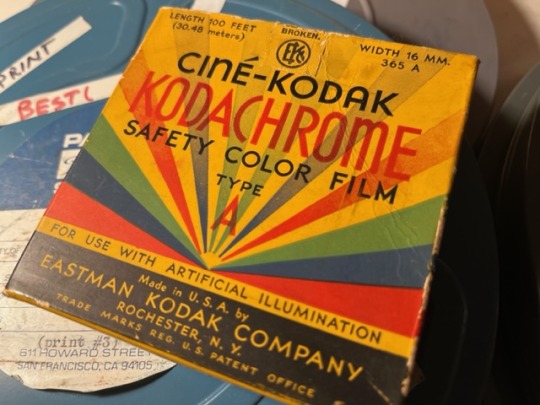
My attempts to print these films was not very successful and I observed that much of their charm came from seeing them projected as camera original Kodachrome. In fact, these films are a bit more like journals rather than films as such, and their original Kodachrome nature is appropriate for their genre and syntax.
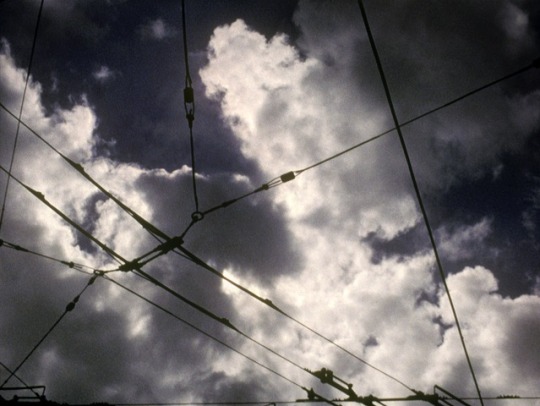
Two are travel films in the traditional home movie sense. Another is a purification journal upon the passing of Stan Brakhage. Two of them, that are the most complex, are made from scraps and out-takes of films shot in Kodachrome. And finally there is a portrait of Nick Hoff, who assisted me in writing Devotional Cinema, a portrait that preceded my portrait films made a few years later.
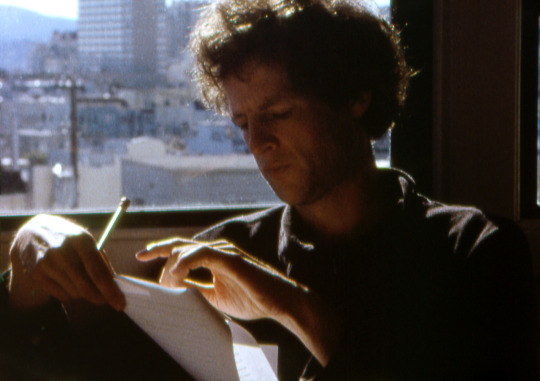
The reason I am not making these films available for rental is simply that every projection of them could be their last. Once these films are scratched or damaged they are gone, and in most cases not repairable.
I have only shown them publicly a few times in the Maya Deren theater at the Anthology Film Archive in New York where they have a most excellent James Bond projector and archival level technicians to project them.
Lux Perpetua I (2000-2002 / 2016, 23 min) Original Kodachrome only Lux Perpetua II (1999-2002 / 2016, 31 min) Original Kodachrome only
Other Archer (2003 / 2016, 9 min) Original Kodachrome only
Death of a Poet (2003 / 2016, 21 min) Original Kodachrome only
Ossuary (1995-2005 / 2016, 43 min) Original Kodachrome only
Dreams Reveal a Weightless World (2016 / 2024, 20 minutes) Original Kodachrome only
The filmography page, along with the listings on this page, have direct links to the stills, the technical information, and Nathaniel’s descriptions of each of these films.
#nathaniel dorsky#kodachrome#Lux Perpetua I#Lux Perpetua II#other archer#death of a poet#ossuary#DREAMS REVEAL A WEIGHTLESS WORLD
4 notes
·
View notes
Text
China film screenings Nathaniel Dorsky Jerome Hiler
UCCA CENTER FOR CONTEMPORARY ART, 4 Jiuxianqiao Rd, Chaoyang, Beijing, China
The art gallery in Beijing does not furnish us with information about place, time, and date for these showings. But we are happy to announce a following list provided by Light Cone distribution in Paris. The events either occurred in the past or will take place in the future. For more details, please conduct your own research. Thank you!

Screenshot from Weibo, social media platform in China
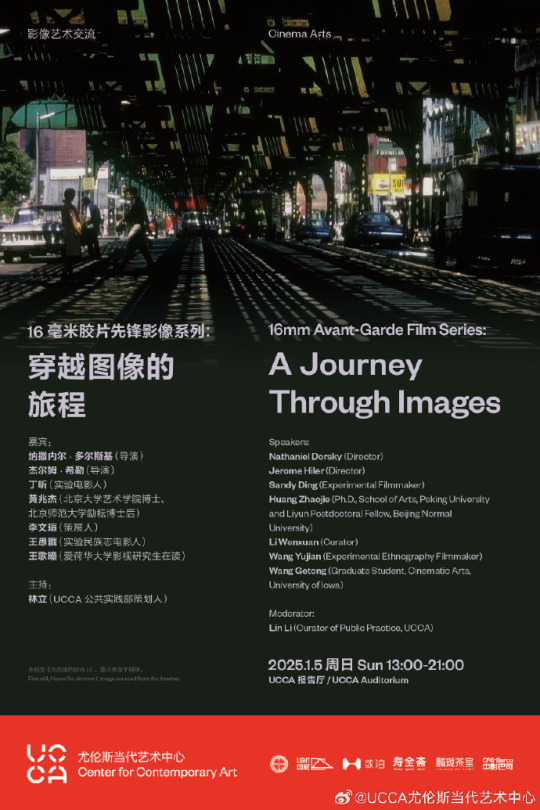
Online Q&A from January 5th 2025
Film Programming
TRISTE Nathaniel DORSKY 17 REASONS WHY Nathaniel DORSKY ARBOR VITAE Nathaniel DORSKY LOVE'S REFRAIN Nathaniel DORSKY WORDS OF MERCURY Jerome HILER IN THE STONE HOUSE Jerome HILER NEW SHORES Jerome HILER HOURS FOR JEROME Nathaniel DORSKY HOURS FOR JEROME Nathaniel DORSKY COLOPHON Nathaniel DORSKY PLACE D'OR Nathaniel DORSKY
link Weibo
link UCCA Center Beijing
#film shows#nathaniel dorsky#jerome hiler#Triste#17 reasons why#Arbor vitae#love’s refrain#WORDS OF MERCURY#IN THE STONE HOUSE#new shores#HOURS FOR JEROME#colophon#PLACE D'OR
2 notes
·
View notes
Text
Scratch projection Paris with films by Jerome Hiler
Light Cone Distribution Paris presents a Scratch Projection at Hôtel Luminor, featuring a selection of films by Jerome Hiler, titled, A CERTAIN SLANT OF LIGHT: THE FILMS OF JEROME HILER. Tuesday, 21 January 2025 at 20h30
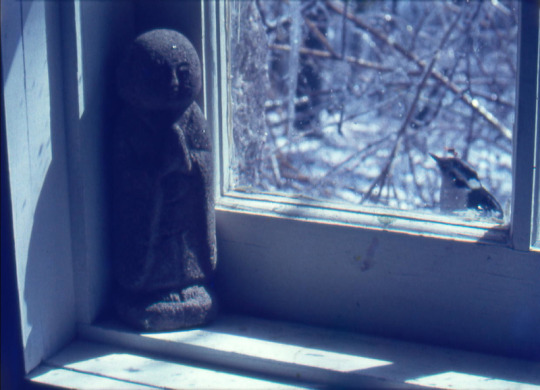
In The Stone House, Jerome Hiler
film programming
WORDS OF MERCURY Jerome HILER 2010-2011 I 16mm I color I silent I 25 min
BAGATELLE II Jerome HILER 1964-2016 I 16mm I color I silent I 16 min
IN THE STONE HOUSE Jerome HILER 1967-2012 I 16mm I color I silent I 35 min
Luminor Hôtel de Ville 20 rue du Temple 75004 Paris France
link light cone
2 notes
·
View notes
Text
CINEINFINITO presents Jerome Hiler
Light Cone distribution Paris indicates two screenings scheduled for the end of January 2025 at CINEINFINITO in Santander, Spain.
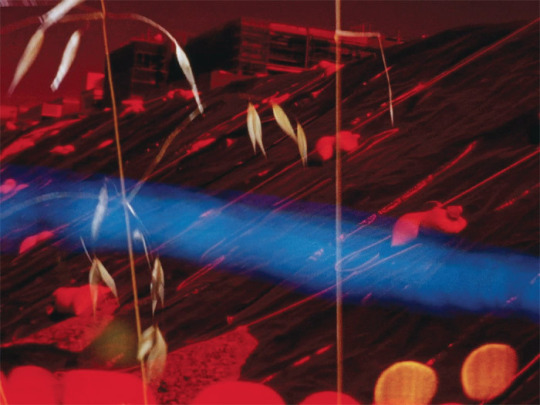
Words of Mercury, Jerome Hiler
film programming WORDS OF MERCURY Jerome HILER MARGINALIA Jerome HILER NEW SHORES Jerome HILER
film programming BAGATELLE II Jerome HILER IN THE STONE HOUSE Jerome HILER BAGATELLE I Jerome HILER RULING STAR Jerome HILER
For more information, please visit this Instagram link Asociación Cineinfinito. Please note that the date and time of the film shows are yet to be confirmed. Thank you!
link lightcone distribution, Jerome Hiler
1 note
·
View note
Text
Film Still: Dreams Reveal a Weightless World
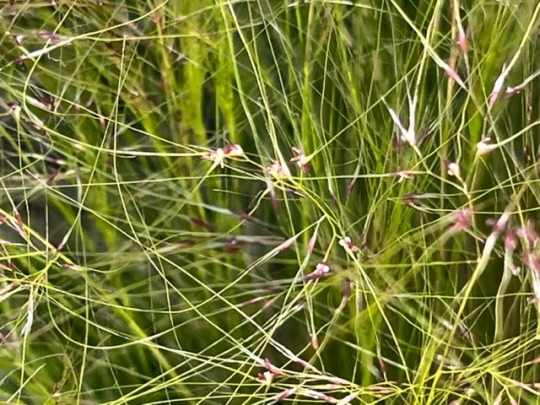
Dreams Reveal a Weightless World Nathaniel Dorsky l 2016 / 2024 l 20 minutes l silent speed l 18fps l 16mm l color l silent
Ossuary was made up of the Kodachrome outs and trims from more than a decade of shooting and making films in Kodachrome. This new film, Dreams Reveal a Weightless World, is made from the Kodachrome outs from editing Ossuary… It is the outs of the outs, so to speak. N.D.
2 notes
·
View notes
Text
The Uncanny Presence, Milwaukee showcase
New Films by Nathaniel Dorsky & Jerome Hiler on November 6th, 7:00 to 8:00 pm
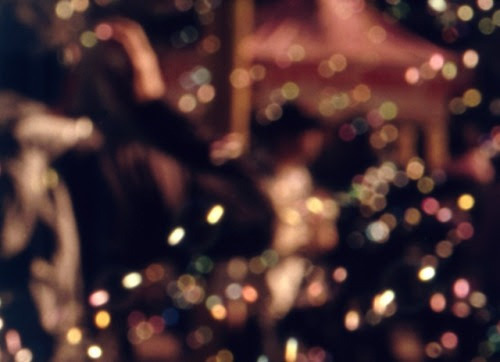
Film still Apricity
“In the last few years I have been making a series of cinematic portraits of young filmmaking friends acting as collaborators in portraiture. There is always a surprise as to what the Bolex reveals of a person that is not revealed with the naked eye.” – Nathaniel Dorsky
Filmmakers and partners, Nathaniel Dorsky and Jerome Hiler, have been two of the most singular voices in experimental cinema for the better half of a century. “The Uncanny Presence”, a program comprised of new and recent work, finds Dorsky and Hiler continuing to push the boundaries of their practices later in life.
Programmed in collaboration with the artist themselves, these works continue to translate the seemingly ordinary into visual splendor while affirming the importance and power of collaboration.
Milwaukee Union Cinema Film program Apricity | Nathaniel Dorsky Bagatelle I | Jerome Hiler Naos | Nathaniel Dorsky O Death | Nathaniel Dorsky Caracole (for Izcali) | Nathaniel Dorsky Careless Passage | Jerome Hiler
Free for members (Includes UWM students) $5 admission for all others. You can inquire about a membership at the Union Cinema.
Link University of Wisconsin-Milwaukee screening event
#nathaniel dorsky#jerome hiler#film shows#bolex#milwaukee#University of Wisconsin-Milwaukee#apricity#Bagatelle I#naos#o death#CARACOLE (FOR IZCALI)#Careless Passage
2 notes
·
View notes
Text
A retrospective of the films of Jerome Hiler and Nathaniel Dorsky at Doc Films, Chicago
Programmed by: Hannah Yang and Jackson Zaro
The 9-week series of Nathaniel Dorsky and Jerome's Hiler's work will play at Doc Films's Max Palevsky Cinema, located at 1212 E 59th Street Chicago, IL 60637. All of the screenings are at 8pm, except The Arboretum Cycle, which will start at 7pm. All 16mm prints courtesy of Canyon Cinema.
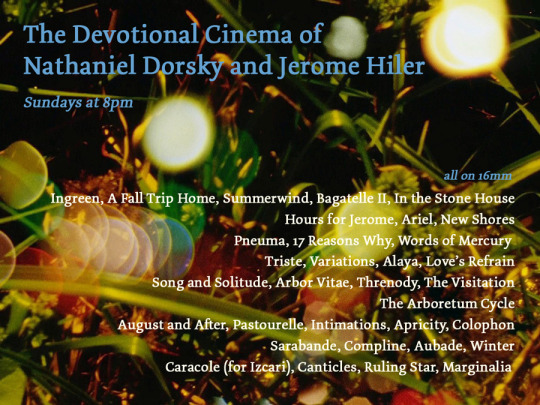
"Intermittence penetrates to the very core of our being, and film vibrates in a way that is close to this core." In his book Devotional Cinema, filmmaker Nathaniel Dorsky identifies the feeling of illness or health that follows experiencing certain films, and locates as the cause a film's ability to "mirror and realign our metabolism." For example, the intermittent quality of light in film projection is not unlike our natural vision or the way we experience life (with gaps and moments of the unknown). Similarly, we watch films in a dark cinema like we watch the illuminated world "from the dark theater of our skull." Dorsky and his partner Jerome Hiler have developed this theory of cinema alongside a filmmaking practice that is equally concerned with our chemical relationship to film. Experiments with in-camera editing, spontaneity, beautifully layered superimpositions, polyvalent form, silence, and silent speed projection (at 18 frames per second) define some of their work. As Dorsky aptly describes it, the films involve humans beyond mere depiction by creating a form that has human qualities and characteristics. One gets the sense that the films are alive; watching the film turns into conversing, thinking, and breathing with the film. Focusing a sensitive attention on cinema and its unique qualities, Dorsky and Hiler have created a body of work which spans their early experiments of the 60s to new films today — films that uncover simultaneously elemental and unknown things in the world to us in breathtaking, moving ways. The nature of celluloid and the art of its presentation is deeply integrated into their work — the necessity of the cinema to these films, and these films to the cinema, lays the ground for a devotional experience. All prints courtesy of Canyon Cinema.
Ingreen, A Fall Trip Home, Summerwind, Bagatelle II, In the Stone House (1964, 1966, 1964-2016, 2012)
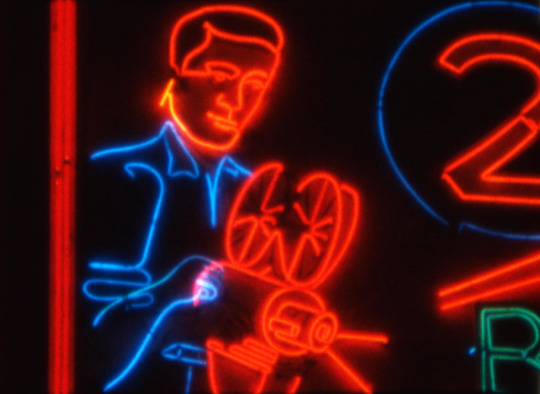
Nathaniel Dorsky, Jerome Hiler · TRT 88m · 16mm Nathaniel Dorsky's early films trace one's adolescent relationship to nature, from the bewilderment with magnificent green fauna to an attempted reconciliation with the specter of the 19th century. Following their time studying film in New York, Dorsky and partner Jerome Hiler moved to the "Stone House" at Lake Owassa, NJ in 1967. Originally only shown to friends, Hiler's home movie footage was later edited into In the Stone House. Sunday, October 6th 8:00 PM
Hours For Jerome, Ariel, New Shores (1982, 1983, 2012)
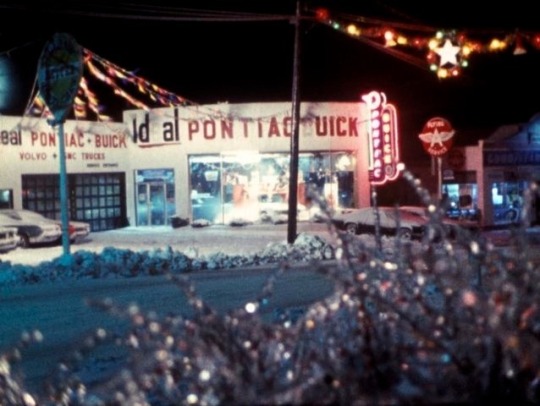
Nathaniel Dorsky, Jerome Hiler · TRT 96m · 16mm From 1966-70 Dorsky shot film daily, resulting in an open-ended work that was later edited into Hours for Jerome, a seasonal film of exquisite composition documenting his and Hiler's time in New York and Lake Owassa. Similarly, New Shoresassembles Hiler's footage from 1971-87 into a sublime recollection of their lives in San Francisco after leaving New York. Ariel is a physical field of color from experimentally developed expired Anscochrome stock. Sunday, October 13th 8:00 PM
Pneuma, 17 Reasons Why, Words of Mercury (1983, 2013, 2011)
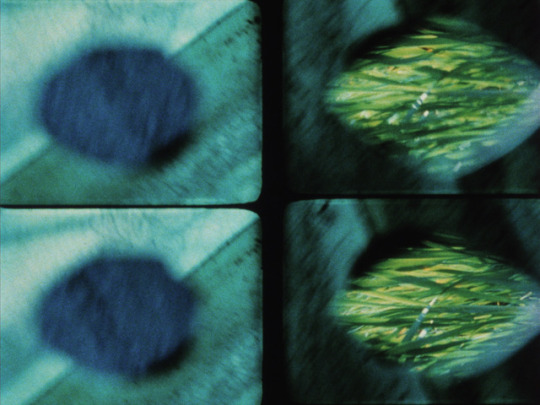
Nathaniel Dorsky, Jerome Hiler · TRT 72m · 16mm Pneuma, made out of unexposed film stock collected from shops, is considered by Dorsky as his first "polyvalent" film — a concept of "open montage" in which all shots are arranged to "resonate" several shots later. 17 Reasons Why makes use of old regular 8 cameras and unslit 8mm film to create four frames within the projected 16mm. Words of Mercury is a stunning masterpiece of in-camera superimpostions, resulting in gorgeous, layered images. Sunday, October 20th 8:00 PM
Triste, Variations, Alaya, Love's Refrain (1996, 1998, 1987, 2001)
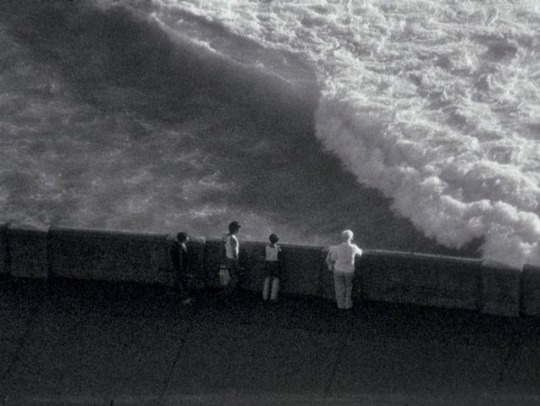
Nathaniel Dorsky · TRT 94m · 16mm The three following films were conceived as part of four cinematic songs, the first works of Dorsky's in San Francisco. Triste compiles footage shot from 1974-96, developing on his theory of polyvalent editing. Variations is birthed of additional footage shot in the 90s. Love's Refrain occurs at the time when Dorsky's artistic process intertwined editing and shooting. Alaya is a cosmological work whose beauty exists on multiple degrees of scale. Sunday, October 27th 8:00 PM
Song and Solitude, Arbor Vitae, The Visitation, Threnody (2006, 2000, 2004, 2002)
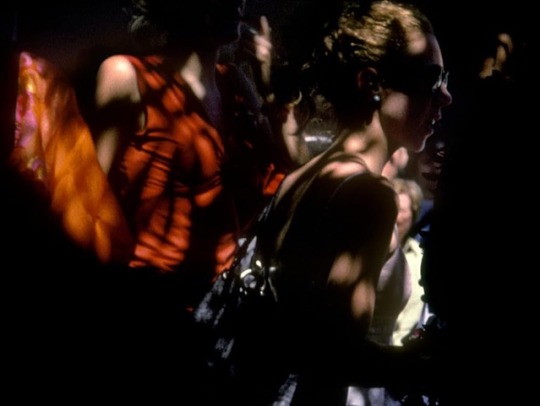
Nathaniel Dorsky · TRT 92m · 16mm Threnody (part of the Two Devotional Songs alongside The Visitation) was created for Stan Brakhage after his death and is one of Dorsky's most stunning films — one that practically quivers with the intense beauty, intrigue, and life concentrated in each shot. Similarly elegaic is the darker, inward-looking Song and Solitude, which was made during the last year of Dorsky's friend, Susan Vigil's, life. Sunday, November 3rd 8:00 PM
The Arboretum Cycle (2017-2018)
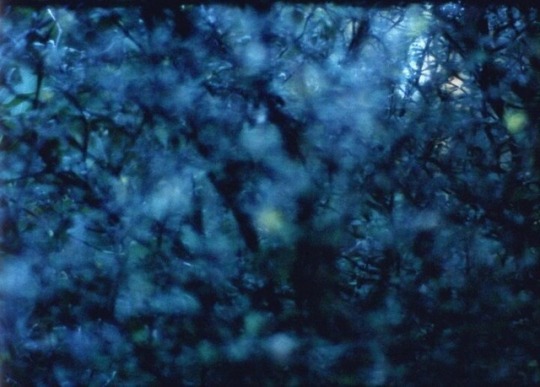
Nathaniel Dorsky · TRT 137m · 16mm Shot at the Golden Gate Park Botanical Garden over the course of a year, The Arboretum Cycle consists of seven films examining light's effect on the floral surfaces of the garden. The film cycle's seasonal progression procures a form that reflects various stages of life as the floral cycle shifts from blossoming to wilting. Light shifts on illuminated surfaces as the sun shines through fog and Dorsky experimentally adjusts the aperture of his lens. Sunday, November 10th 7:00 PM
August and After, Pastourelle, Intimations, Apricity, Colophon (2012, 2010, 2015, 2019, 2018)
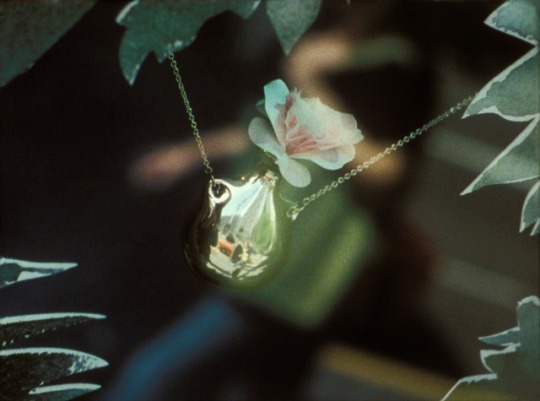
Nathaniel Dorsky · TRT 87m · 16mm August and After is a consecration to lost friends through delicate photography. Pastourelle explores light through illuminated planes while Intimations aims to divulge the camera's ways of seeing, with Dorsky adjusting the lens within shots. Apricity, dedicated to Jane Wodening, is an ode to the winter sun. Colophon, a coda to The Arboretum Cycle, is Dorsky's returns to Golden Gate Park "a spring later" — a new thing after the winter. Sunday, November 17th 8:00 PM
Sarabande, Compline, Aubade, Winter (2008, 2009, 2010, 2008)
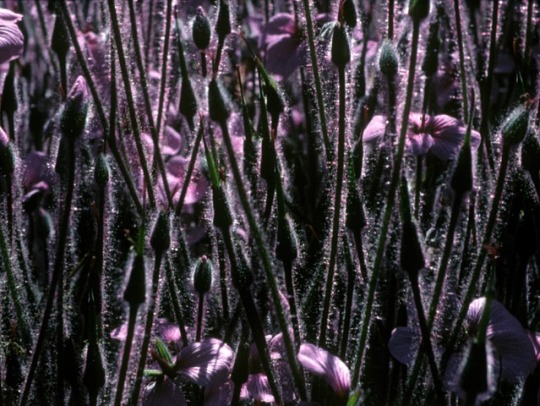
Nathaniel Dorsky · TRT 67m · 16mm Viewed by Dorsky as a quartet and, together, a work in and of itself, Sarabande is warm and dancelike, while Winter captures the rain-soaked season in San Francisco. In between the two, Compline is a goodbye to the Kodachrome that Dorsky had faithfully shot for years, the final nighttime devotional hour before the morning song. Aubade is the filmmaker's first time shooting in color negative, and marks a new beginning. Sunday, November 24th 8:00 PM
Caracole (for Izcari), Canticles, Ruling Star, Marginalia (2023, 2020, 2019, 2015)
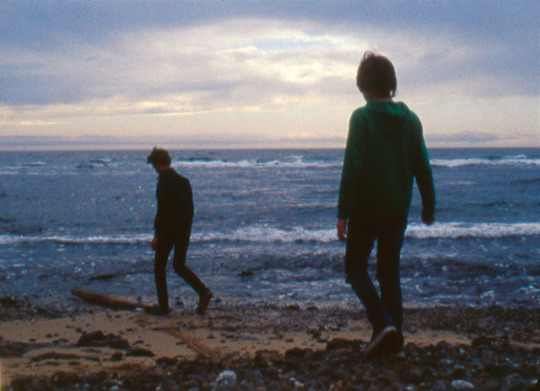
Nathaniel Dorsky, Jerome Hiler · TRT 79m · 16mm The autumnal Canticles is a goodbye to the bygone season, while Marginalia is Hiler's contemplation on the present, with images of hand-drawn scribbles fading into forests and filmic scratches lighting up the frame. A look forward to newer works includes Caracole (for Izcari), part of Dorsky's recent cinematic portraits of young collaborators and friends, and Ruling Star, Hiler's first film with negative stock, prompting a new way of filmmaking. Sunday, December 8th 8:00 PM
Doc Films is a student-led, volunteer-run movie theater and film society at the University of Chicago Doc Films Chicago
#nathaniel dorsky#jerome hiler#film shows#retrospective#Doc Films#A Fall Trip Home#Summerwind#Bagatelle II#In the Stone House#Hours For Jerome#Ariel#New Shores#Pneuma#17 Reasons why#Words of Mercury#Triste#Variations#Alaya#Love's Refrain#Song and Solitude#Arbor Vitae#The Visitation#Threnody#Arboretum Cycle#August and After#Pastourelle#Intimations#Apricity#Caracole (for Izcali)#canticles
2 notes
·
View notes
Text
Max Goldberg on the slide lecture by Jerome Hiler for Film Comment Magazine
Heaven Can Wait was written in celebration of Jerome’s presentation of the slide lecture at MoMA to open the film series, The Illuminated Hours, a celebration of the films of Nathaniel Dorsky and Jerome Hiler at MoMA and the Anthology Film Archives. This “live" presentation at MoMA is on the evening of Thursday, May 9th, 2024 at 7 in the evening.
Cinema Before 1300
By Max Goldberg
Early in Cinema Before 1300, Jerome Hiler’s feature-length survey of medieval stained glass, the filmmaker explains that he first saw Chartres Cathedral in the pages of a book gifted to him in the mid-1960s by Charles Boultenhouse and Parker Tyler, elders of the era’s New York avant-garde. It took another 25 years or so for Hiler to travel to Europe to see the cathedral for himself. He brought a Nikon to photograph stained glass across France and England, sharing his 35mm slides with friends and, eventually, in a few public lectures. After one such presentation at the Harvard Film Archive in 2017, Hiler was persuaded by HFA Director Haden Guest to turn his slides into the discursive film that will show at the Museum of Modern Art next week, ahead of several programs of his and his partner Nathaniel Dorsky’s lush experimental films.
It feels odd to call Cinema Before 1300 an essay film, since the term has come to be associated with a riddling, theory-minded style. Hiler’s approach is closer to the classical ideal of the essay: lucid, companionable, amateur in the original sense (as in, “one who loves”). He is perfectly willing to concede the limits of his knowledge—“I don’t know what the significance of that is,” he says of the recurring figure of a king tugging at his collar like “an ancestor of Rodney Dangerfield”—but his exploration is nevertheless grounded in years of close looking and practical know-how. (In addition to making intensely lyrical films, Hiler has worked extensively, if privately, with glass.)
For those who might demur at the prospect of an old-school art-history lecture, it ought to be said that Hiler’s photographs are totally gorgeous. His framing shows the windows to great advantage, and the saturated color of his original 35mm slides is a perfect match for the brilliance of the stained glass. The narration approaches this visual index from a variety of angles: with a theological gloss on Pseudo-Dionysius the Areopagite’s idea of “light from divine darkness,” for instance, or a historical note on the cataclysmic fire that ripped through Chartres in 1194. Hiler muses on how the windows change with weather and time of day, making “many windows out of one”; offers a technical explanation of the perceptual effects of halation; argues for leaving the marks of age in any restoration; and marvels at all the pictorial detail that couldn’t have been seen by congregants—just as, we might note, the subtleties of his own richly detailed films invariably escape a first viewing.
It is rather amazing that a work so full of information should also feel so serene. Similar to the way in which large stained-glass windows are made from many smaller pieces of glass, Hiler divides Cinema Before 1300 into discrete sequences, each comprising a paragraph’s worth of narration and a few slides of the glories of Chartres, Saint-Denis, Canterbury, and other cathedrals. At the end of each stanza, Hiler finishes his talk and pauses for a few beats, allowing the glass to have the last word, and then repairs to darkness. He uses interleaving blackouts to the same rhythmic, almost respiratory effect in his lyrical films, but here the technique doubles back to the imagined space of the cathedral. “Darkness is the sacred setting that film and stained glass share,” Hiler reflects over an extended interval of black toward the beginning of the film. “Our overview begins in the early 12th century, a time when darkness was imbued with a powerful spiritual significance . . . It was not the darkness of negation; it was pregnant, life-giving, limitless, and timeless.”
The connection between the cathedral and the cinema goes well beyond the shared spiritual interplay of light and dark: there is also the sequential nature of early narrative art; the saints as movie stars, with “personalities . . . known, loved, and adopted by the populace”; the way the likeness of a window’s sponsor functioned like an executive-producer credit; and how certain tropes, like the devil perched on a person’s shoulder, have passed through time virtually unchanged. Leaving narrative aside, Hiler can’t resist mentioning how five densely patterned windows at York Minster resemble Stan Brakhage filmstrips, and we might just as easily see the mandala-minded Harry Smith in the alchemist’s rose at Notre-Dame or the 3D-obsessed Ken Jacobs in the frequently used blues and reds that produce a mesmerizing sense of “dimension without perspective.” Perhaps most salient is the medieval ideal of claritas, which, per Hiler, creates “an environment that [awakens] the mind through the senses”—very close indeed to the “devotional cinema” explored in Dorsky’s slim book of the same name.
In this telling, the first “death of cinema” can be dated back to 1241, when a Council of the Sorbonne ruling indirectly led to clear windows flooding cathedrals with daylight, banishing the necessary conditions for stained glass to work its magic. The fate of the cathedrals readily brings to mind the devolution of the great movie palaces, including, in just the past year, the Castro Theatre in San Francisco, Hiler and Dorsky’s longtime hometown. More particular to Hiler’s own craft, the historical subject also lends itself to thinking about what it means to stay true to an artistic lineage when the tide goes out. Hiler’s lament, late in Cinema Before 1300, that he watches his “world of culture and values disappear in daily installments” needs to be taken alongside the film’s testament to the remarkable persistence of material culture even through the most trying circumstances.
In a long interview included in the recent book Illuminated Hours: The Early Cinema of Nathaniel Dorsky and Jerome Hiler, Hiler recalls that his very first shot with a movie camera was of a rose-colored piece of glass. A friend advised that instead of actually filming stained glass, Hiler should make his films themselves “be like stained glass.” Viewers can judge his success in the upcoming programs celebrating the book at MoMA and Anthology Film Archives, but Cinema Before 1300, like Hiler’s earlier documentary work, stands on its own two feet. A few weeks after watching the film at home, I went up to the Cloisters on a rainy day and found the stained-glass figures in the Early Gothic Room waiting for me, perfectly assured yet surprisingly familiar. Which is to say that Cinema Before 1300 leaves a long-lived afterimage—and its own measure of sanctuary.
Max Goldberg is an archivist and writer based in the Boston area.
#jerome hiler#nathaniel dorsky#max goldberg#film comment#film comment magazine#articles#illuminated hours
1 note
·
View note
Text
The Brooklyn Rail front page features stills from the films of Jerome Hiler and Nathaniel Dorsky
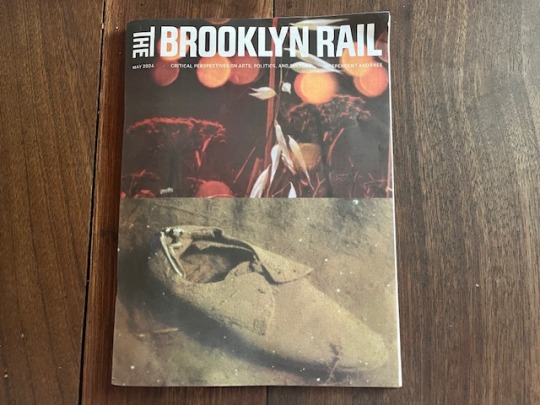
Cover of the May 3rd, 2024 edition of The Brooklyn Rail. Stills from Jerome’s Words of Mercury and Nathaniel’s Triste
#thebrooklynrail#will epstein#illuminated hours#jerome hiler#interview#personal history#nathanieldorsky#nathaniel dorsky#art in conversation#words of mercury#triste#articles#film stills
3 notes
·
View notes
Text
Will Epstein interviews Jerome Hiler and Nathaniel Dorsky for The Brooklyn Rail
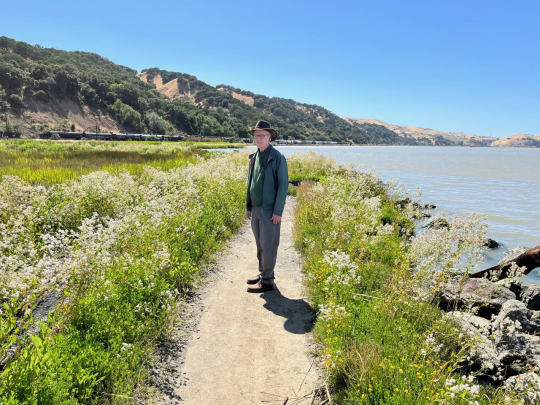
Jerome Hiler along the Sacramento River
This interview is in reference to the semi-retrospective series of ten screenings at NY MoMA and the Anthology Film Archives scheduled for May, 2024
Brooklyn Rail Interview link Nathaniel Dorsky & Jerome Hiler with Will Epstein
#Will Epstein#interview#Jerome Hiler#Nathaniel Dorsky#illuminated hours#artinconversation#TheBrooklynRail
1 note
·
View note
Text
Jerome and Nathaniel will be celebrated at MoMA and Anthology Film Archives this month of May.
This ten program mini retrospective is to celebrate the publishing in English of a new book on the early years of their filmmaking titled Illuminated Hours, The Early Cinema of Nathaniel Dorsky and Jerome Hiler.
There will be seven hosted in person programs in New York at MoMA followed by three in person shows at Anthology Film Archives. This selection of films will open with Jerome Hiler’s slide lecture, Cinema Before 1300. The emphasis will both be on the early formative explorations and a selection of their later work from the last six years or so. Many new films will be screening in NY for the first time.
The series is online here; MoMA and Anthology Film Archives will be finalizing their screening schedules and updating their calendar pages.
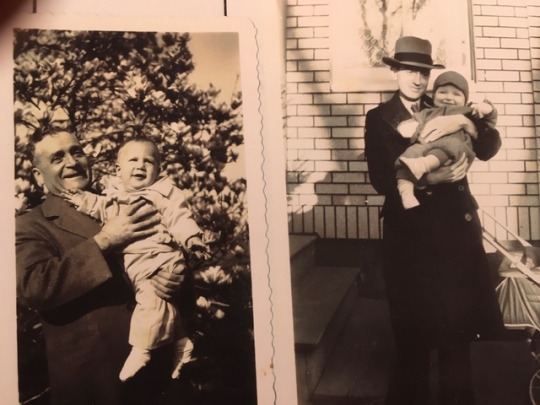
Nathaniel on the left, 1944, with his grandfather in the Bronx Botanical Gardens. Jerome on the right with his godfather, 1944, Jamaica, Queens
MoMA calendar link Anthology Film Archives link
Illuminated Hours: The Early Cinema of Nathaniel Dorsky and Jerome Hiler, by Francisco Algarín Navarro & Carlos Saldaña. English edition managed and edited by Nick Hoff. ISBN: 978-8-4940-9766-9
.
#nathanieldorsky#jerome hiler#MoMA#anthology film archives#illuminated hours#nathaniel dorsky#film screening#film shows#personal history and photos#in person#retrospective
2 notes
·
View notes
Text
Nathaniel's Caracole (for Mac) to premiere on March 16 at the Museum of the Moving Image
Caracole (for Mac) is part of the First Look film festival at the Museum of the Moving Image on Saturday, March 16th at 3:00 p.m. in New York City. This group show is the avant-garde showcase within the festival and will take place in the Redstone Theater beginning at 3 pm, titled, Illuminations: Elsewhere/Here.
Caracole (for Mac)
Nathaniel Dorsky | 2022 | 7 minutes | silent speed | 18fps | 16 mm | color | silent
Mac McGinnes, a dear friend and neighbor, often sat in with me during my editing sessions. This brief but light-filled farewell was made for Mac upon his passing. N.D.
1 note
·
View note
Text
Film Still: O Death
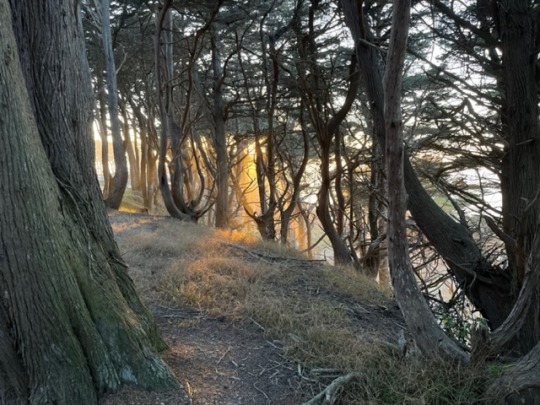
O Death Nathaniel Dorsky I 2023 I 5.5 minutes I silent speed I 18 fps I 16mm I color I silent In the spirit of the times and my own growing older, a brief tip of the hat… N.D.
6 notes
·
View notes
Text
Will Epstein interviews Nathaniel Dorsky for The Believer magazine
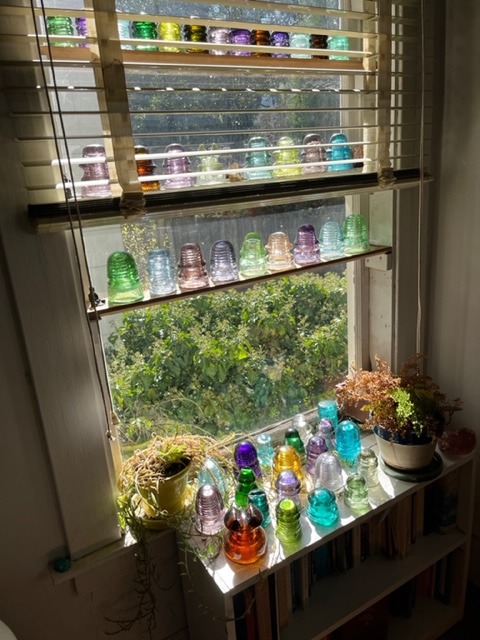
Musician, Will Epstein, visited me in my apartment on a sunny San Francisco afternoon and we had a humorous and enjoyable conversation. The interview was published by The Believer Magazine, issue one hundred forty-three, October 11th, 2023.

link for An Interview with Nathaniel Dorsky
1 note
·
View note
Text
Jerome Hiler to be celebrated at the Pacific Film Archive in Berkeley, California
The PFA will host four shows and lectures by Jerome Hiler this early autumn at the Berkeley Art Museum.
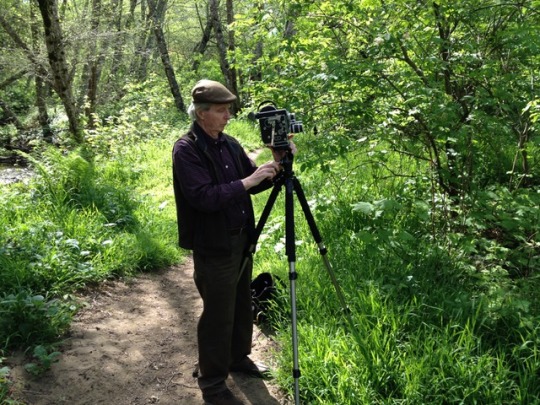
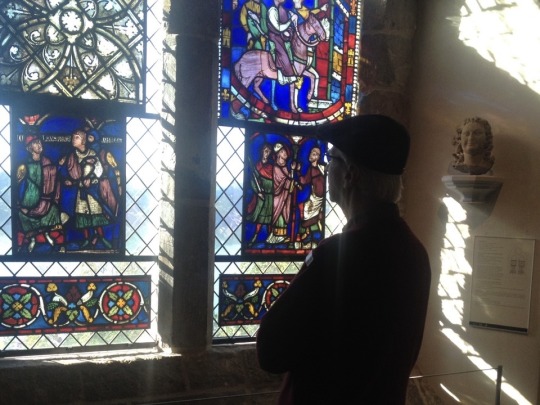
Show one: Wednesday, September 13th, 7pm, Three Experimental Films, Program One
Show two: Sunday, September 17th, 4:00pm, Lecture: Cinema Before 1300
Show three: Sunday, October 1st, 4pm, Three Experimental Films, Program Two
Show four: Saturday, October 28th, 4pm, Music Makes a City
link Berkeley Art Museum and Pacific Film Archive monthly calendar for more details
link Illuminations by Jerome Hiler at BAMPFA
2 notes
·
View notes